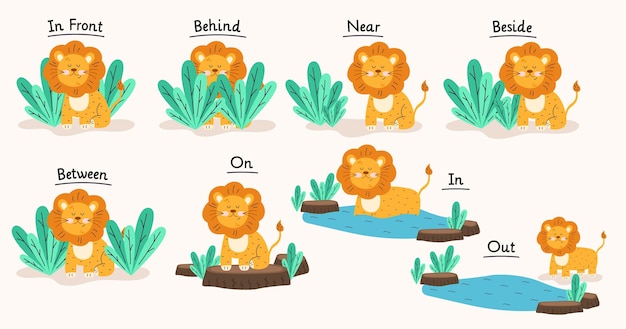Facts about Cheetahs for Kids

Cheetahs are the fastest land animals on Earth, reaching speeds of up to 70 miles per hour.
A cheetah’s body is built for speed, with a lightweight frame and long legs.
Cheetahs have distinctive black tear marks on their face, which help reduce glare from the sun.
Unlike other big cats, cheetahs cannot roar. Instead, they make a variety of purring and chirping sounds.
A cheetah’s acceleration is mind-blowing; it can go from 0 to 60 miles per hour in just a few seconds.
Cheetahs have a unique hunting technique, using their incredible speed to catch their prey by surprise.
A cheetah can cover up to 22 feet in a single stride while running at top speed.
Cheetahs have non-retractable claws, which provide better traction and grip while running.
Cheetahs have excellent eyesight, allowing them to spot prey from a distance.
Despite their speed, cheetahs are usually not strong enough to defend their kills from other predators.
Cheetahs often struggle with overheating due to their intense bursts of speed, and they need to rest and cool down after a chase.
Cheetahs have a unique hunting success rate of almost 50%, which is higher than most big cats.
A cheetah’s tail acts like a rudder while they are running, helping them change direction quickly.
Cheetahs are excellent climbers and can easily scale trees or termite mounds.
Unlike other big cats, cheetahs hunt during the day, taking advantage of their incredible speed and eyesight.
Facts about Cheetahs for Kids part 2
Cheetahs have a high-pitched chirping call, which they use to communicate with each other.
Cheetahs have a gestation period of approximately 90-95 days before giving birth to a litter of 3-5 cubs.
Cheetah cubs have a unique, fluffy mantle-like fur on their backs, believed to help protect them from predators in the wild.
Cheetahs are solitary animals, with males and females only coming together for breeding.
Cheetahs have a lifespan of around 10-12 years in the wild, but can live up to 20 years in captivity.
Cheetahs have a high level of genetic diversity, making it crucial for their survival as a species.
Cheetahs have excellent camouflage capabilities, with their spotted fur blending in with the tall grass.
Cheetahs are not great swimmers and usually avoid water unless necessary.
Female cheetahs are the primary caregivers for their cubs, and they teach them essential hunting skills.
Cheetahs have large nasal passages and lungs to inhale a large amount of oxygen, enabling them to generate more energy for sprints.
Cheetahs can eat up to 10 kg (22 lbs) of meat in a single meal.
Cheetahs can reach their top speed in just a few strides, but they can only maintain it for short distances.
Cheetahs have a flexible spine that allows them to stretch and contract their bodies while running.
The decline in the cheetah population is mainly due to habitat loss and human-wildlife conflict.
Some cheetahs have been trained to assist farmers in scaring off crop-damaging animals, providing an alternative to lethal methods.
The cheetah’s scientific name is Acinonyx jubatus, which means pouncing or swift cat.
Cheetahs have been a symbol of royalty and elegance in various ancient cultures.
Cheetahs have been featured in many movies and documentaries, helping raise awareness about their conservation status.
Cheetahs have been successfully reintroduced into some areas where they had previously gone extinct.
Cheetahs have an intricate social structure, with males forming small groups called coalitions.
Cheetahs have evolved to have a lightweight frame, reducing their energy expenditure while running.
Cheetahs have a unique reproductive strategy, with males having a higher chance of reproductive success by forming coalitions.
Cheetahs have a specialized spine, which acts like a spring, providing extra flexibility while running.
Some cheetahs have been trained to act as ambassadors for their species, to educate people about their conservation needs.
Cheetahs have large, well-developed adrenal glands, which produce adrenaline to fuel their bursts of speed.
Cheetahs have a flexible shoulder joint that allows for a longer stride while running.
Cheetahs have a unique spot pattern on their fur, which is as distinctive as human fingerprints.
Cheetahs often rest in the shade during the hottest times of the day to avoid overheating.
Cheetahs have a specialized respiratory system, with large nasal passages and lungs to maximize oxygen intake while running.
Cheetahs are premier sprinters but not long-distance runners, and they need time to recover between chases.

